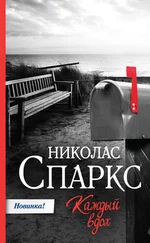“Warning?”
“Of things to come,” she says. “Until that weekend, I was not sure you were… passionate. But after that weekend, I sometimes found myself wishing for the old Ira. The shy one, the one who always showed restraint. Especially when I wanted to sleep in.”
“Was I that bad?”
“No,” she says, tilting her head back to gaze at me through heavy-lidded eyes. “Quite the contrary.”
We spent the afternoon tangled in the sheets, making love with even greater passion than the night before. The room was warm, and our bodies glistened with sweat, her hair wet near the roots. Afterward, as Ruth showered, the rain began, and I sat in the kitchen, listening as it pounded against the tin roof, as content as I had ever been.
Her parents returned soon after that, drenched by the downpour. By then, Ruth and I were busy in the kitchen, preparing dinner. Over a simple meal of spaghetti with meat sauce, the four of us sat around the table as her father talked about their day, the conversation somehow segueing as it often did into a discussion about art. He spoke of Fauvism, Cubism, Expressionism, and Futurism – words I’d never heard before – and I was struck not only by the subtle distinctions that he drew, but by the hunger with which Ruth devoured every word. In truth, most of it was beyond me, the knowledge slipping through my grasp, but neither Ruth nor her father seemed to notice.
After dinner, once the rain had passed and evening was descending, Ruth and I went out for a walk on the beach. The air was sticky and the sand packed under our feet as I gently traced my thumb along the back of her hand. I glanced toward the water. Terns were darting in and out of the waves, and just past the breakers, a school of porpoises swam by in leaping formation. Ruth and I watched them until they were obscured in the mist. Only then did I turn to face her.
“Your parents will be moving in August,” I finally said.
She squeezed my hand. “They are going to look for a house in Durham next week.”
“And you start teaching in September?”
“Unless I go with them,” she said. “Then I will have to find a job there.”
Over her shoulder, the lights in the house went on.
“Then I guess we don’t have much choice,” I said to her. I kicked at the packed sand briefly, drawing up the courage I needed before meeting her eyes. “We have to get married in August.”
At this memory, I smile, but Ruth’s voice cuts through my reverie, her disappointment evident.
“You could have been more romantic,” she tells me, sulking.
For a moment, I’m confused. “You mean… with my proposal?”
“What else would I be talking about?” She throws up her hands. “You could have dropped to one knee, or said something about your undying love. You could have formally asked for my hand in marriage.”
“I already did those things,” I said. “The first time I proposed.”
“But then you ended it. You should have started all over. I want to recall the kind of proposal one reads about in storybooks.”
“Would you like me to do that now?”
“It is too late,” she says, dismissing the notion. “You missed your chance.”
But she says this with such flirtatious overtones that I can hardly wait to return to the past.
We signed the ketubah soon after we got home from the beach, and I married Ruth in August 1946. The ceremony was held under the chuppah, as is typical in Jewish weddings, but there weren’t many people in attendance. The guests were mostly friends of my mother’s that we knew from the synagogue, but that was the way both Ruth and I wanted it. She was far too practical for a more extravagant wedding, and though the shop was doing well – which meant I was doing well – both of us wanted to save as much as we could for a down payment on the home we wanted to buy in the future. When I broke that glass beneath my foot and watched our mothers clap and cheer, I knew that marrying Ruth was the most life-changing thing I’d ever done.
For the honeymoon, we headed west. Ruth had never visited that part of the state before, and we chose to stay at the Grove Park Inn resort in Asheville. It was – and still is – one of the most storied resorts in the South, and our room overlooked the Blue Ridge Mountains. The resort also boasted hiking trails and tennis courts, along with a pool that had appeared in countless magazines.
Ruth, however, showed little interest in any of those things. Instead, soon after we arrived, she insisted on heading into town. Madly in love, I didn’t care what we did as long as we were together. Like her, I had never been to this part of the state, but I knew that Asheville had always been a prominent watering hole for the wealthy during the summer months. The air was fresh and the temperatures cool, which is why during the Gilded Age, George Vanderbilt had commissioned the Biltmore Estate, which at the time was the largest private home in the world. Other moneyed Americans followed his lead, and Asheville eventually came to be known as an artistic and culinary destination throughout the South. Restaurants hired chefs from Europe, and art galleries lined the town’s main street.
On our second afternoon in town, Ruth struck up a conversation with the owner of one of the galleries, and that was when I first learned about Black Mountain, a small, almost rural, town just down the highway from where we were honeymooning.
More accurately, I learned about Black Mountain College.
Though I’d lived in the state all my life up to that point, I’d never heard of the college; for most people who spent the rest of the century in North Carolina, a casual mention of the college would elicit blank stares. Now, more than half a century after it closed, there are few people who remember that Black Mountain College even existed. But by 1946, the college was entering a magnificent period – perhaps the most magnificent period of any college, anywhere, at any time, ever – and when we stepped out of the gallery, I could tell by Ruth’s expression that the name of the college was already known to her. When I asked her about it over dinner that night, she told me that her father had interviewed there earlier in the spring and had raved about the place. More surprising to me was that its proximity was one of the reasons she had wanted to honeymoon in the area.
Her expression was animated over dinner as she explained that Black Mountain College was a liberal arts school founded in 1933, whose faculty included some of the most prominent names in the modern art movement. Every summer, there were art workshops – conducted by visiting artists whose names I did not recognize – and as she rattled off the names of the faculty, Ruth grew more and more excited at the thought of visiting the college while we were in the area.
How could I say no?
The following morning, under a brilliant blue sky, we drove to Black Mountain and followed the signs to the college. As fate would have it – and I have always believed it to be fate, for Ruth always swore she knew nothing about it beforehand – an artists’ exhibition was being held in the main building, spilling out onto the lawn beyond. Though it was open to the public, the crowds were relatively sparse, and as soon as we pushed through the doors, Ruth simply stopped in wonder. Her hand tightened around my own, her eyes devouring the scene around her. I watched her reaction with curiosity, trying to understand what it was that had so captivated her. To my eyes, those of someone who knew nothing about art, there seemed to be little difference in the work displayed here from that at any of the countless other galleries we’d visited over the years.
“But there was a difference,” Ruth exclaims, and I get the sense that she still wonders how I could have been so dense. In the car, she is wearing the same collared dress she wore on the day we first visited Black Mountain. Her voice rings with the same sense of wonder I’d witnessed back then. “The work… it was like nothing I had ever seen before. It was not like the surrealists. Or even Picasso. It was… new. Revolutionary. A giant leap of imagination, of vision. And to think that it was all there, at a small college in the middle of nowhere! It was like finding…”
Читать дальше

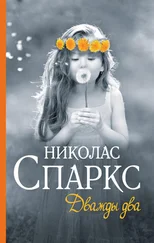
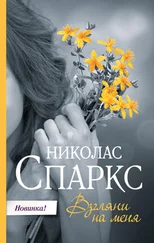
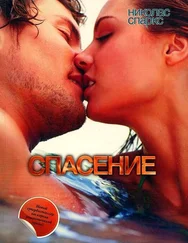


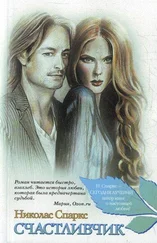

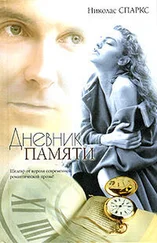
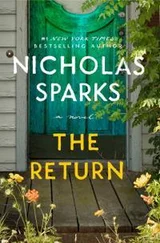
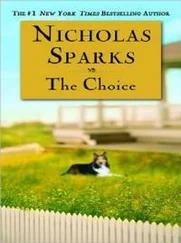
![Николас Спаркс - Каждый вдох [litres]](/books/414723/nikolas-sparks-kazhdyj-vdoh-litres-thumb.webp)
